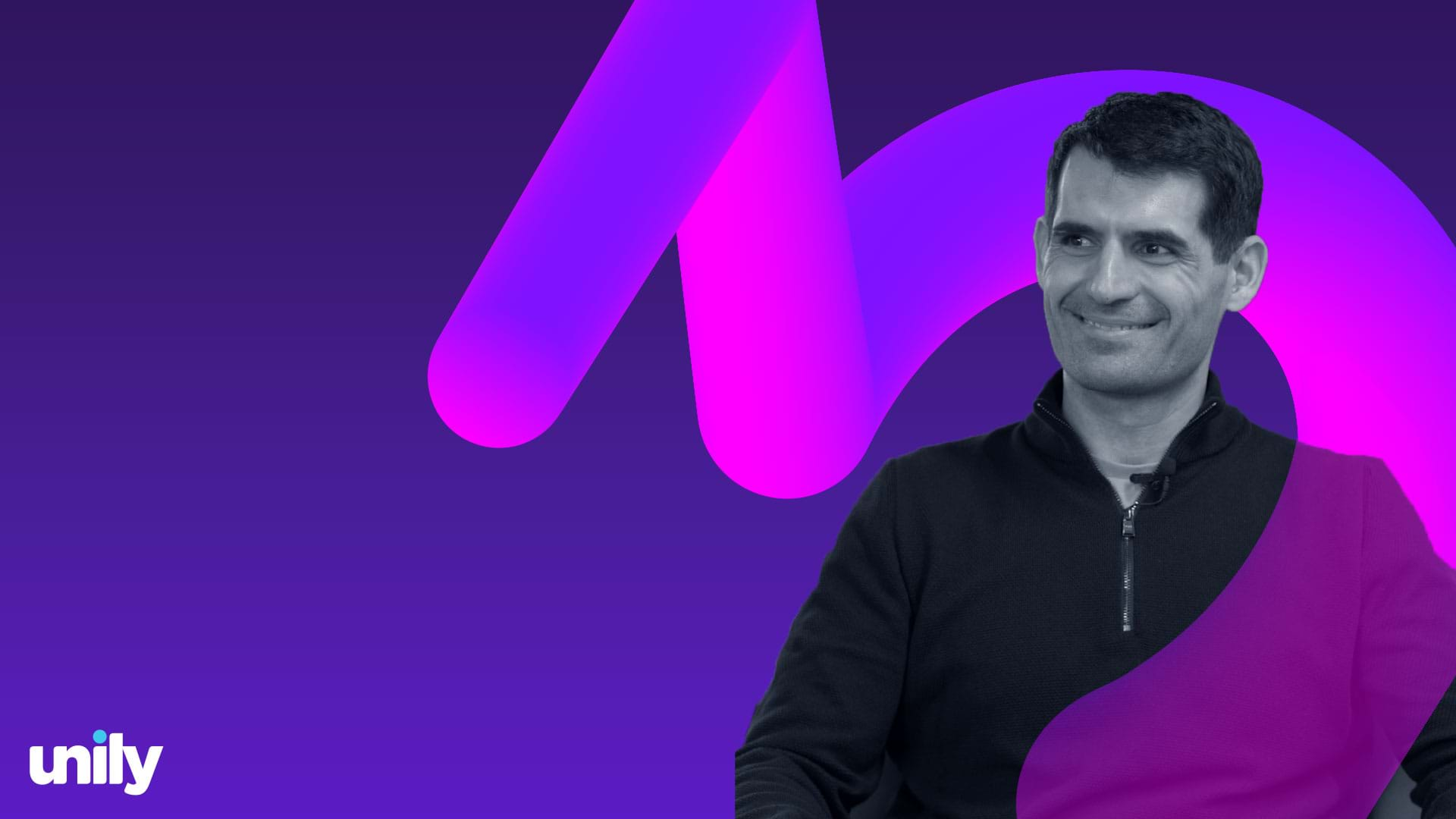
A milestone moment for intranets
At the start of the decade, we were asking whether the intranet was dead. Ten years on, our workspaces have morphed beyond our wildest imaginations and the intranet finds itself at the beating heart of the reimagined digital workplace.
The release of three major reports by Gartner, Forrester, and IDC cements the essential nature of the modern intranet within the enterprise stack. And, as the only triple Leader identified across all three reports, Unily’s capabilities have been recognized as market-leading.
As longstanding CTO, Sam Hassani has been driving Unily’s product evolution since its inception. We were lucky enough to grab some of his time to quiz him on what it’s been like to be a part of such an exciting growth trajectory and what the future holds for this exciting category.
The rise of the next-generation intranet
It’s been more than a decade since Sam first joined Unily, and intranets were very different back then. From early origins as a collection of static content and linked pages, the intranets of today have refocused to become people-centric enablers of employee engagement and empowerment.
"We've reached a real pivotal moment within our market and the definition of the space. If you rewind to over a decade ago, when we first started building internet solutions, long before the inception of Unily, intranets were very, very different back then compared to what Unily is today."
For Sam, one of the key drivers of intranet evolution is the growing sophistication of consumer technology. Employees have become highly attuned to what a great digital experience looks like, and consumer-facing apps have set a standard that employees have come to expect from enterprise tech. He points to industry leaders like Apple as an example of the type of consumer-grade experiences shaping employee expectations today.
"When you go to Apple.com to buy a new iPhone, you're embedded in a highly personalized, tailored, smart experience. Behind the scenes, there's a whole load of tech that's interacting and bringing together information from loads of different systems – a spectrum of different capabilities – but that gets presented to the user as a simple customer journey. Now we can take those learnings and apply them to the employee experience so that we optimize every step of the employee experience."
At the same time, business leaders are waking up to the power of an engaged workforce, creating a demand for effective, scalable digital solutions.
"Business leaders across the world are starting to appreciate that providing strong digital employee experiences is going to lead to highly engaged employees; and by having highly engaged employees, that's going to drive the strongest business outcomes... Leaders are buying into this thinking, and I think we're seeing a shift now. Over the last ten years, we've invested heavily in customer experience capabilities, and the next ten years will be about investing in employee experience capability."
Navigating a complex technology landscape
So, for business leaders looking to lean in, where are the big opportunities when it comes to enhancing the digital employee experience? According to Sam, the big challenge enterprises are grappling with is digital workplace complexity. The sheer volume of applications purchased over the past few years has created a messy digital landscape that’s proving to be exhausting for employees and application leaders alike.
"You know, we've spoken a lot in recent times about the plethora of employee apps that are rising. It's a little bit chaotic. The digital landscape is somewhat complex. There's a recent stat that over the last five years the average number of apps in large enterprises increased from 120 to 190. That’s just a staggering increase, largely accelerated by the pandemic."
Enterprises need to unify those applications into a frictionless experience, and this is where the intranet steps in to provide that malleable experience layer.
"The employee experience is a complex area, so being able to provide unification across that employee experience and having a strong integration framework is pivotal to solving that complexity,” he explains. “We're fortunate enough with Unily to have a prized framework that allows us to really deliver a consistent experience that simplifies how employees can actually interact with different applications across the digital landscape."
But in a noisy marketplace where many point solutions exist to solve niche employee experience challenges, it can be confusing for application leaders to work out who does what.
"A lot of these applications are targeted to improve the employee experience,” he proffers. “They adopt similar narratives, similar language, and position themselves alongside platforms like Unily. And that can create some confusion."
What it takes to be an intranet Leader today
So, the million-dollar question: what makes an intranet best-in-class? For Sam, it’s all about breadth and depth of capabilities. With three different reports all looking at the technology through a different lens, being a Leader across all three means you have to pack a broad punch.
"Every analyst will view the market in a way that's somewhat unique to them. So they have their own approach to scoring, and they look at capabilities through slightly different perspectives and apply different weighting to those capabilities... What's allowed us to perform really, really well is the nature of our product. We are broad in capability set and we go really, really deep across those capabilities. So for us to score consistently highly across all three reports is down to the fact that we have that breadth and depth."
What’s next for intranet evolution?
As we navigate the complexities of the modern enterprise landscape, the future of intranets holds immense promise. So, where does Sam think the big opportunities for future growth lie?
"I think the trend that's going to have the biggest impact on what's next for us as a market is that of artificial intelligence. We've already seen over the last 12-18 months the impact of AI on capabilities like ours that aim to solve employee experience challenges... Gen AI has really changed the way in which platforms can automate repetitive tasks in our context and really assist with activities like content creation. And from an end-user perspective, it can help with summarization of content and multi-lingual transcriptions – helping employees to access knowledge faster and in ways that suit their unique needs and preferences."
But the ability of AI capabilities to accelerate employee experience transformation doesn’t stop there. According to Sam, the next phase of growth will see AI being used to take on even more cognitive burden; helping employees to make smarter decisions at pace and, in turn, driving rapid innovation.
"I really believe that gen AI capabilities are just the tip of the iceberg. This really is just the beginning. AI is evolving at a rapid pace, and soon we'll start to see much smarter iterations of artificial intelligence really taking on bigger tasks within the digital employee experience landscape, performing end-to-end processes, and taking prompts from employees."
Get all three reports, at once, on us!
For an independent analysis of the intranet marketplace, access the latest analyst reports in a single bundle.
Unily named the only triple leader
The only place to get all the intranet insights in one place.

Interview transcript:
Kaz: So, big news: Unily is now the only named Leader across all three analyst reports. What was your reaction to that news?
Sam: My reaction was, a sense of sheer pride. I mean, to become a leader in in one report is, is an amazing accomplishment. But to be a leader across all three is, is just amazing. And I think it's a testament to all the employees who have contributed to Unily’s success over the last 5 or 6 years. Not only the team that has been deeply involved in working with our analysts under the intense scrutiny and meticulous scoring that goes into looking at a platform like ours, but everyone, past and present, who's contributed to building Unily into what it is today.
Kaz: So you mentioned there a little bit about all the meticulous work that went into responding to those reports. As CTO, you're the person who assembled the team. What's the secret to success?
Sam: Unfortunately, there's no secret sauce, no magic bullet. Every analyst will view the market in a way that's somewhat unique to them. So, they have their own approach to scoring, and they look at capabilities through slightly different perspectives and apply different weighting to those capabilities. I think for us, what's allowed us to perform really, really well is the nature of our product. We are broad in capability set and we go really, really deep across those capabilities. So for us to score consistently highly across all three reports is down to the fact that we have that breadth and depth.
Kaz: Nice of packing a broad punch, as it were.
Sam: Absolutely.
Kaz: So three reports, there's lots of detail there. I know we responded in a lot of detail. What were the hot takeaways across all those three reports?
Sam: I think the biggest takeaway for me across the three reports is how large enterprises, across our customer base and across all industries as a whole, are still struggling to get to grips with providing and delivering a consistent employee experience layer.
You know, we've spoken a lot in recent times about the plethora of employee apps that are rising. It's a little bit chaotic. The digital landscape is somewhat complex. You know, there's a recent stat that over the last five years the average number of apps in large enterprises increased from 120 to 190. That’s just a staggering increase, largely accelerated by the pandemic. The employee experience is a complex area, so being able to provide unification across that employee experience and having a strong integration framework is pivotal to solving that complexity. We're fortunate enough with Unily to have a prized framework that allows us to really deliver a consistent experience that simplifies how employees can actually interact with different applications across the digital landscape.
Kaz: That's crazy! 120 to 190 applications! So I guess what we're doing there is trying to simplify that estate for the employee.
Sam: Absolutely. And the challenge is a lot of these applications are targeted to improve the employee experience. They adopt similar narratives, similar language, and position themselves alongside platforms like Unily. And that can create some confusion. So to be able to provide that simplistic view of how we can bring this together through a unified experience layer is critical to being successful.
Kaz: So we've spoken a lot there about employee experience. And I guess traditionally people would say what we do is intranets. What do you think this says to you about the maturity of the intranet space?
Sam: I think we've reached a real pivotal moment, within our market and the definition of the space. I mean, if you rewind, you know, over a decade ago, when we first started building internet solutions, long before the inception of Unily, intranets were very, very different back then as to what you know usually is today. The internet was a collection of content and linked static pages brought together to provide employees with information. That quickly evolved as we started to think about, ‘how we can make those solutions more people-centric?’. So conversations around, well, you know, I'm Sam, this is my role, I operate in this location, I need information that's more relevant to me. And then we kind of evolve that discussion more around not only connecting people to content, but to other people, and to tools and knowledge that's relevant and can enable people to be more effective.
I think where we are today is in the midst of the employee experience era. And what I mean by that is employees are empowered employees, you know, somewhat accelerated by the pandemic. We've seen a shift in workforce dynamics, hybrid working patterns, remote working employees, you know, expect a consumer grade experience. And that's largely down to a generational shift in the labour market. And I think we can look to how companies have been successful in the consumer space to be able to relate to that and be effective. If you take companies that have been really successful in that area, Apple, for example, when you go to Apple.com and buy a new iPhone, you're embedded in a highly personalised, tailored, smart experience. But behind the scenes, there's a whole load of tech that's interacting and bringing together information from loads of different systems, a spectrum of different capabilities, but presents it in a simple employee and simple customer journey. Now we can take those learnings and apply them to the employee experience so that we optimise every step of the employee experience.
Kaz: I love that as an Apple fanboy, I can talk about how those those slick experiences can really make the difference and ultimately keep you as a customer. So I guess we try to use that same learning to keep our employees as well.
Sam: Absolutely. And I think there's a lot we can learn from customer experience. You know, I think business leaders across the world are starting to appreciate that providing strong digital employee experiences is going to lead to highly engaged employees. And by having highly engaged employees, that's going to drive the strongest business outcomes. Business leaders are buying into this thinking, and I think we're seeing a shift now that in the last ten years, we've invested heavily in customer experience capabilities for the next ten years about investing in employee experience capability.
Kaz: Yes. Enter the employee experience era!
Sam: Absolutely.
Kaz: So, you've got me excited about the employee experience era. Now I'm keen to know what's next…
Sam: What's next? That's the million dollar question. We’ve always existed to solve the employee experience challenges faced by the world's leading organisations.
I think the trend that's going to have the biggest impact on what's next for us as a market is that of artificial intelligence. We've already seen over the last 12-18 months the impact of AI on capabilities like ours that aim to solve employee experience challenges. Gen AI has really changed the way in which platforms can automate repetitive tasks in our context and assist with activities like content creation. Then from an end user perspective, it can help with summarization and transcripting – helping employees to access information in dynamic ways that work for them.
I really believe that gen AI capabilities is just the tip of the iceberg. This really is just the beginning. AI is evolving at a rapid pace, and soon we'll start to see much smarter iterations of artificial intelligence really taking on bigger tasks within the digital employee experience landscape, performing end-to-end processes, and taking prompts from employees.
So, I think the big questions are really going to be around how do we interact with AI in the future? How do we support AI in the future, and how can we actually enable AI to be effective in the workplace, to unlock the full potential, and ultimately deliver experiences that are going to lead to strong outcomes for the businesses that we work with?
Kaz: So clearly, really interesting stuff going on in the AI space. You can reference two parts there: how we support the designers of the employee experience through things like content creation, but also how we add value to the end employee through time-saving at a time where we’re all time poor and attention poor. I'm excited to see what we've got planned next for AI.
Sam: Absolutely.
Kaz: So thank you, everyone, so much for listening and watching. If you want to get into the details of the reports across IDC, Gartner, and Forrester, you can download the full bundle, just head to Unily.com. It’s the only place on the whole internet where you can download all three reports at once. Thanks for watching.
Talk to us
Get in touch today to see how Unily could support your enterprise internal communications goals.

Having spent 10 years immersed in the employee experience space, Kaz has a reputation for being a thought leader with a cutting-edge stance on the latest industry trends and predictions. His experience rolling out more than 20 intranets to over a million employees means he has on-the-ground knowledge and data to back up his innovative perspectives - and he is not afraid to challenge the status quo. Kaz joined Unily in 2018 and is now a regular speaker at industry events including Unily's Unite - the #1 employee experience conference.

Sam played a founding role in the birth of Unily after joining the company in 2017 from Microsoft, where he was part of the SharePoint revolution. Leveraging 18+ years of experience driving innovative technology strategies, Sam now presides over Unily’s market-leading product roadmap. Sam's vision for the future revolves around leveraging technology to enable human potential. Under his leadership, Unily is poised to deliver transformative experiences that enhance the working lives of millions of employees around the world.